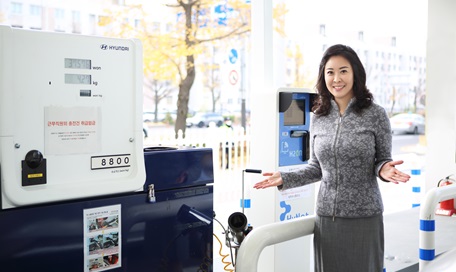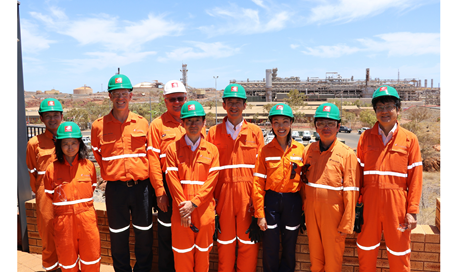LNG fuels: the locally-produced, lower-emissions alternative
LNG can replace higher-emissions fuels used in mining, transport and shipping, reducing greenhouse gas emissions by up to 30 per cent.
Western Australia is well-placed to lead the uptake of LNG fuels, with large LNG production facilities close to fuel-intensive mining developments.
LNG can replace higher-emissions fuels used in mining, transport and shipping, reducing greenhouse gas emissions by up to 30%.
Western Australia is well-placed to lead the uptake of LNG fuels, with large LNG production facilities close to fuel-intensive mining developments. Around 3 billion litres of diesel are imported into the Pilbara every year, primarily for mining. The ships moving mining exports to market use around 5 billion litres of heavy fuel oil.
![Woodside_KingsBay032[ImagebyJarradSeng]](https://www.woodside.com/images/default-source/1-our-business-images/marketing-trading-shipping-images/woodside_kingsbay032-imagebyjarradseng.jpg?sfvrsn=65bf13c4_2)
LNG can replace these higher-emissions fuels, reducing greenhouse gas emissions by up to 30% on a lifecycle basis, while virtually eliminating emissions of sulphur dioxide and fine particulate matter, and dramatically reducing emissions of nitrous oxide.
The global momentum towards LNG as a marine fuel is driven in part by the introduction from January 2020 of the International Maritime Organisation’s 0.5% sulphur cap on shipping fuels. The organisation has also committed to halving greenhouse gas emissions from shipping by 2050.
The global fleet of LNG-fuelled ships is growing rapidly, and includes 23 large cruise ships. Back in 2017, Woodside launched the Siem Thiima, the first LNG-fuelled marine support vessel in the southern hemisphere.
Woodside is also working on developing the use of LNG to generate power in remote areas of Western Australia and to fuel heavy transport. This has the potential to improve Australia’s fuel security and reduce reliance on imports.
Woodside is preparing an LNG fuels hub to capture the environmental and commercial benefits. The first step is building a facility at our Pluto LNG plant to supply trucked LNG for remote power generation in the Pilbara, displacing diesel, and for mining equipment, including trucks and trains. The second phase of the hub will be a bunker ship, to take LNG from Pluto and provide it to ocean-going vessels, such as iron-ore carriers.



